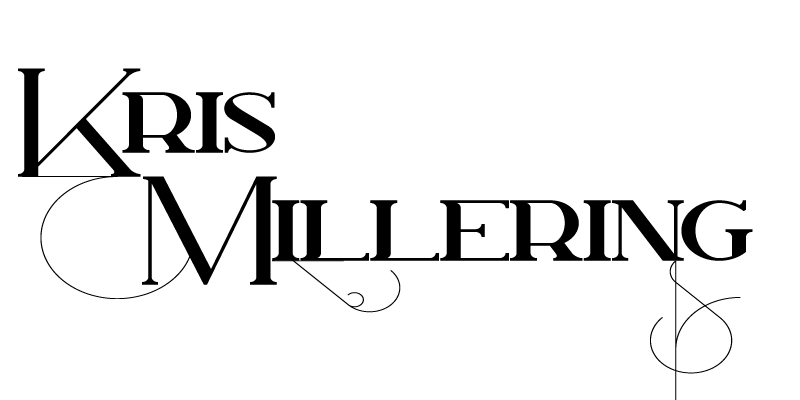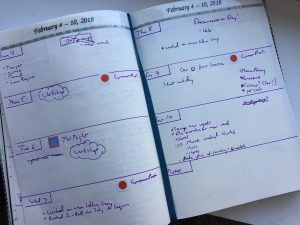keeping on top of it all
As I write this, it’s President’s Day weekend. I’d originally planned to be out and about today, but when I came out of seeing Black Panther (fantastic movie, by the bye!) the temperature had dropped six degrees, the wind was kicking up, and it was snowing pretty good, so I just had lunch and came on home.
I’ve been meaning to talk about organization. Things I should probably state up front:
- I am not a naturally organized person by any means.
- I’m dyscalculic, which among other things means that for me, time is an enduring mystery that calendars and clocks attempt to contain but never quite manage to tame.
- My executive function is the first thing to go when I get stressed.
- I have the working memory of a fairly intelligent gnat.
- Anxiety is my superpower.
(By the way, anxiety is a pretty awful superpower. I mean, I am very good at managing projects because of my ability to imagine everything that might go wrong and come up with strategies to mitigate every single risk. That’s pretty cool. What is less cool is everything else about having anxiety. Zero stars, would not recommend.)
The thing I realized about organization a while back is that the artifacts of organization, the to-do lists and the Trello boards and the bullet journals and everything else, are basically the seismometer of organization. They’re the signal that tells you your systems are working, but they’re not actually getting shit done. They’re just there to tell you if the shit is, in fact, getting done. Seismographs are not earthquakes, they just give you lots of information about the earthquake that just happened.
This, by the way, gives you 100% freedom to abandon an organization system that isn’t working for you, or give yourself a completely fresh start, with zero guilt. The system is just your signal, and if the system isn’t giving you the right signals at the right time, you haven’t failed the system, it’s failed you. (A tip of the hat to Kevin Sonney who does the podcast Productivity Alchemy, who put that into words for me.)
The basic way I think about organization comes in four parts:
Store as little as possible in your head. Anxiety makes this part utterly crucial, but I think even people without anxiety benefit from it. Self-control, good judgment, and decision-making are pretty costly in terms of brain resources. If you offload the stuff that doesn’t need you to think about it into a system of some sort, and then remember to use your system, those resources can get freed up to make better decisions.
Keep your tools in good order. This can mean all kinds of things, depending on your needs and your life. For me, it means a daily calendar check, doing regular pruning on my to-do list, consciously building habits, and setting aside time monthly to research what the newest thing in organization systems is.
Remove friction. Don’t let your tools add cognitive load. If you find something burdensome to use after the initial learning curve is done, feel free to drop it without guilt.
Let the version of yourself with extra capacity make your decisions for you when possible. I get up at 5:15 in the morning. 5:15 AM Kris is completely incapable of making decisions. She’s still mostly asleep, she hasn’t had breakfast yet, and if you give her even the slightest decision to make she’ll either dither for ages and then be late for the bus or she’ll grab the nearest thing to hand and then whoops, it’s 30 degrees out and I’m in short sleeves and the wrong coat.
By contrast, 7 PM Kris has her shit together. She’s checking the weather and her calendar for tomorrow, she is 100% awake and has had dinner so she’s not hungry, and she’s having her smartest hour of the day. 7 PM Kris has the capacity to lay out her clothes and locate her bag and keys so that 5:15 AM Kris just has to take a shower, throw on the clothes that are in the basket designated for today’s outfit, and run out the door.
Even better? Sunday Night Kris, who has had most of a weekend to recharge her executive function batteries and has an app with all her clothing in it. She can sit down, look at her calendar and the predicted weather, and put together a calendar with all her outfits for the week. Then, all Evening Kris has to do is lay out the clothes and make any adjustments necessary.
This doesn’t work in all circumstances, and there are points when all of this gets blown out of the water–for instance, traveling will knock me all wonky for weeks after I get back. I’m still working on the skill of getting back into routines once I’ve been knocked out of them
My tools
For my day to day to-do lists, I use Todoist. (I used to use Habitica, but Todoist integrates with the Amazon Echo and IFTTT, so I switched. Habitica is also pretty amazing.) I have several projects that I use to gather similar actions together (like Dailies, Weekly Chores, and Errands) but otherwise almost everything gets dumped into one big project. Todoist is pretty much ideal for what I need–I can use a bunch of different things to get items into the system, and I don’t feel like I need to mess with percentages complete and such.
I also have an ugly bullet journal. (It is beautiful in my eyes! But I have terrible handwriting. I am not going to be showing off my bullet journal on Instagram.) The bullet journal is less for to-do lists, and more for recording my days and having space to doodle, make notes, and do brain dumps. I have purple pens, washi tape, and stickers for my bullet journal, because these things make me happy. The bullet journal is where I keep all of my writing notes–lists of things I’m working on, story ideas, the status of various projects.
For grocery lists, meal planning, packing lists, etc, I have OneNote. The strength of OneNote is that I can do all of my data entry on a keyboard, and then everything syncs to my phone.
I track submissions using The Grinder. As far as I’m concerned, The Grinder is pretty much perfect at what it’s good at, and I don’t find it burdensome to keep it updated.
For budgeting, I have YNAB. It’s taken me a few months and a few fresh starts to really get my head around it, but now that I’m really into it, it’s pretty amazing. I was never able to follow any of the budgets I put together in Mint, but once I understood the foundations that YNAB stands on, I find it mostly comprehensible.
For wardrobe planning, I use Stylebook. Stylebook is an incredible pain in the butt to get set up–it’s taken me nearly a month to get 80% of my clothing into the app (I was doing a slow-motion closet purge at the same time, which complicated things). But I was tired of wearing the same five outfits all the time, and it makes my little femme heart happy to do outfit planning.
And last but certainly not least…one of the most unexpected organization tools I’ve ever purchased is an Amazon Echo. The Echo’s integration with Todoist is the killer app for me. If I’m home, I can add stuff to my to-do list or to my shopping list without having to stop washing the dishes to grab my phone or a pen.
For me, one of the keys to staying on top of things is to record the stuff I need to do as I think of it–and to be honest, the thirty seconds it takes for me to dry off my hands and find my phone is thirty seconds where I have to keep repeating what I’m trying to capture in my head while also attempting to remember that I need to dry off my hands first and pick up my phone next. This is a cognitive tightrope that often ends with me completely forgetting what I’m trying to get onto my to-do list, without a guarantee that I will ever remember said thing ever again.
Being able to just yell “Hey Alexa, put ‘find that recipe for chocolate cherry bars’ on my to-do list” or “Alexa, put fancy cheese on my shopping list” to my Echo reduces the friction between me and my to-do list immensely. (Alexa also does not ever get tired of telling me what day it is and what time it is, which is good because I ask both questions several times a day.)
I also use it to provide me with transition cues. For instance, every evening the Echo reminds me to turn down the heat. This is also a cue for me that it is almost time for bed, and I need to start that transition–start saying goodnight to people online, wash my face if I haven’t yet, check that the doors are locked, turn on the bed warmer. For days when I’m having special trouble with transitions or executive function in general, I’ll set reminders through the day for various things.
All of this works for me because, at heart, I crave routine and structure. I find both of them freeing. Having spent 1500 words talking about what I do and how, it looks overwhelming, but I find that it really helps keep my anxiety mostly in check and my life in general moving forward.




